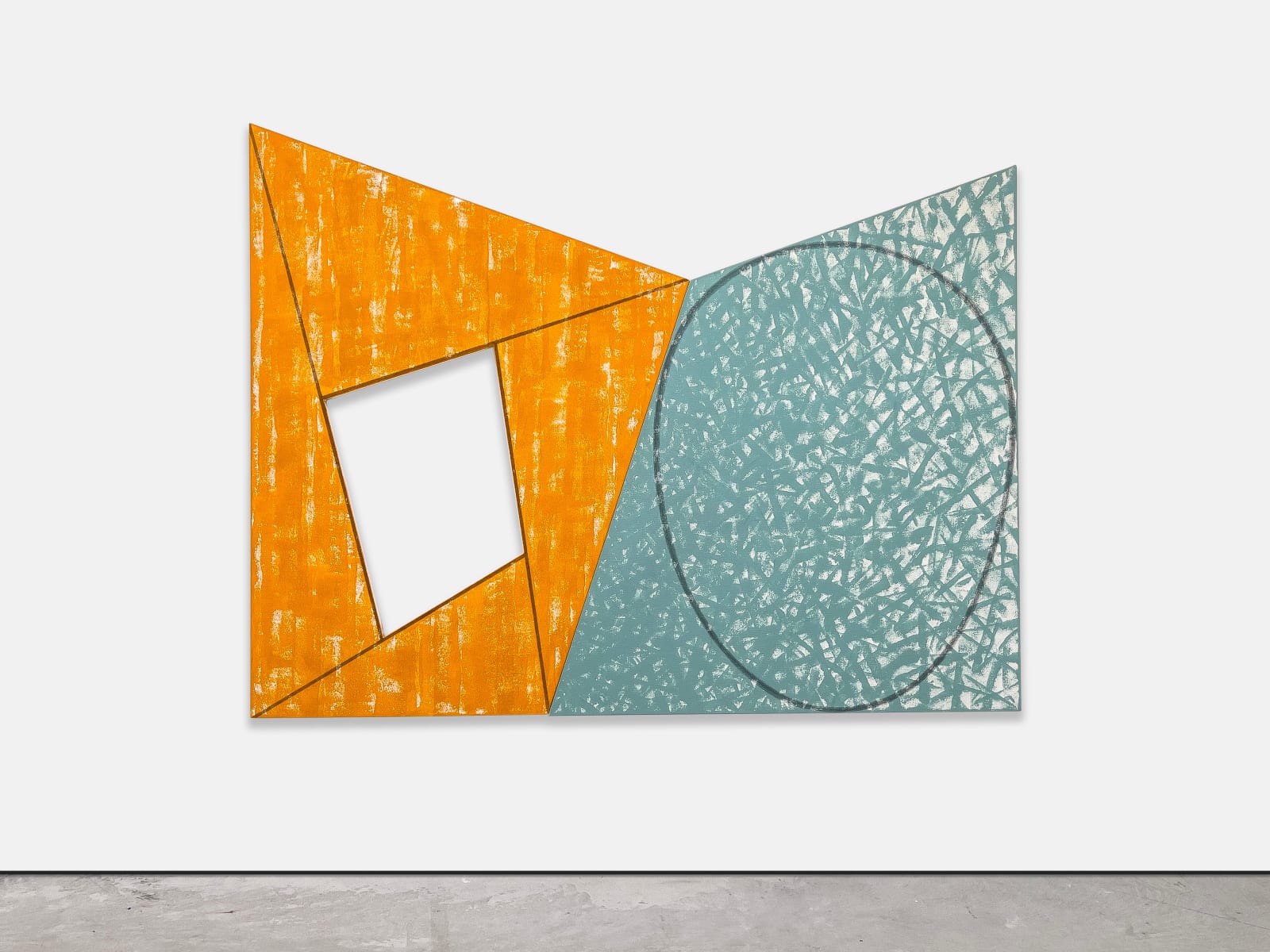
Robert Mangold United States, b. 1937
80 x 105 in
Robert Mangold’s paintings explore and inhabit a mysterious and imaginary area that exists halfway between real and representational space. Comprised of only the simplest of pictorial elements, they are neither objects nor images but somehow both. They are paradoxes: pictures that hang ‘before you like a wall’, the artist has said, but which you can ‘neither enter nor treat as an object’. Instead, they ‘relate [to you] like architecture in a scale related to human size’.
"I got very interested in the idea that if two things share an edge, you're going to consider them one painting...I was thinking of Picasso's Les Demoiselles d'Avignon, maybe the greatest painting of this century. It has so many different types of painting going on. I've always loved it, since my days as a guard at The Modern. So, I thought, if I put one kind of structure in this canvas, and another kind in this canvas, and I paint this canvas one way and this one another. Then I started separating them so they were only touching on one point. And I kept trying to figure out how far I could go and still make this dialogue exist"
(Robert Mangold, quoted in, R. Shiff, Robert Mangold, New York, 2000, p. 246).
Provenance
Daniel Weinberg Gallery, Los Angeles, CARoselyne C. Swig, San Francisco, CA
Christie's, New York (acquired in 2008)
Galeria Elvira Gonzalez, Madrid, Spain (acquired in 2010)
MARUANI MERCIER Gallery, Belgium
Exhibitions
Post Modernism/Modernism - Robert Mangold/Peter Halley, MARUANI MERCIER Gallery, 2018, Brussels, Belgium